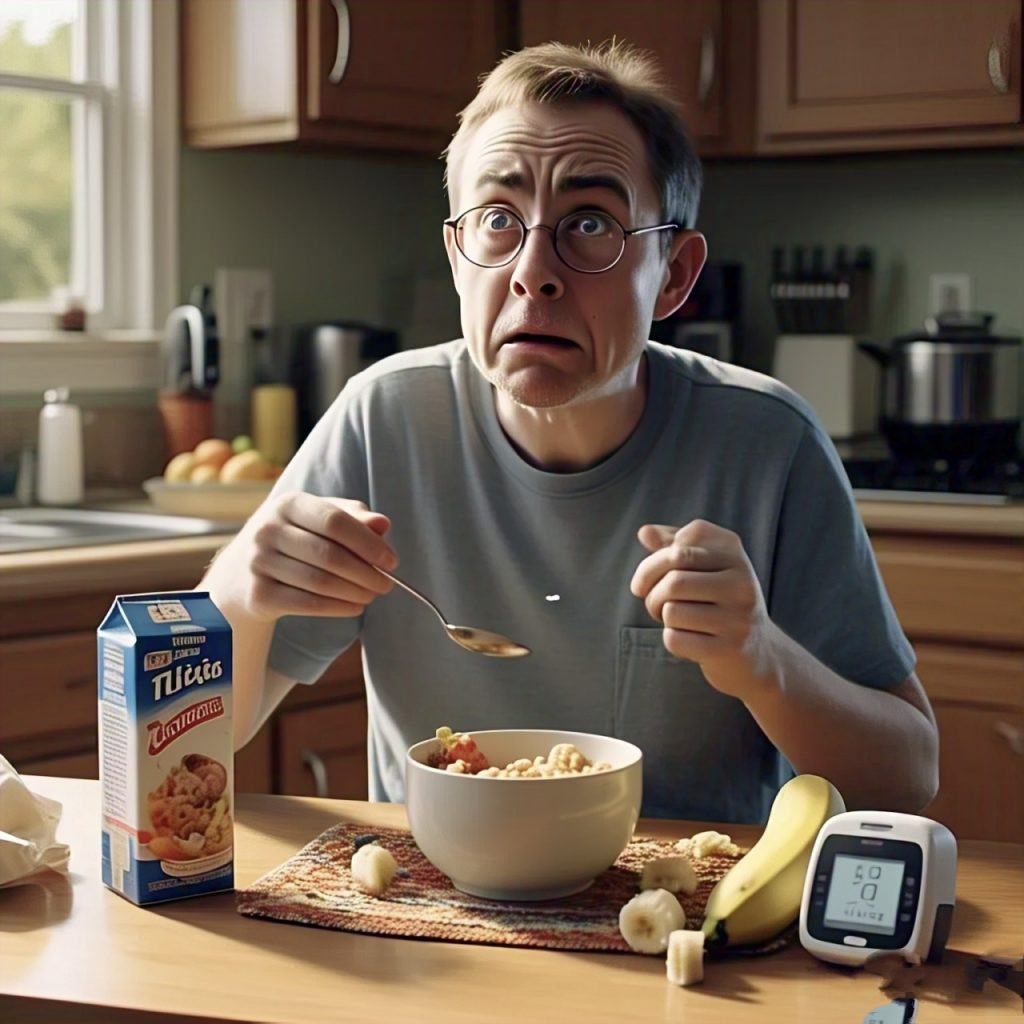Common Breakfast Mistakes That Spike Blood Sugar in Diabetics (and How to Avoid Them)
Introduction:
Breakfast is crucial for managing diabetes, as it sets the metabolic tone for the day. However, common missteps can lead to blood sugar spikes, undermining control. Let’s explore these pitfalls and how to navigate them for a balanced start.
1.Overloading on Refined Carbohydrates:
White bread, pastries, and sugary cereals digest quickly, causing rapid glucose spikes.
Now the solution is to take whole grains like oats or quinoa, which release energy slowly. Try avocado on whole-grain toast or a veggie omelet with spinach.
2. Skipping the Breakfast:
Skipping meals can trigger overeating later, leading to erratic blood sugar levels.
Even a small, protein-rich snack like Greek yogurt or a handful of nuts can stabilize morning glucose.
3. Sipping Sugary Beverages:
Fruit juices and sweetened coffees pack hidden sugars without fiber.
Choose water, herbal tea, or black coffee. For a nutrient boost, blend a green smoothie with spinach and chia seeds.

4. Neglecting Protein and Healthy Fats:
A carb-only meal lacks staying power, speeding up sugar absorption.
Pair carbs with protein or fats. Add eggs, nut butter, or avocado to your plate for sustained energy.
5. Oversized Portions:
Even healthy foods can spike glucose if portions are excessive.
Use measuring tools or the “plate method”: fill half with non-starchy veggies, a quarter with protein, and a quarter with whole grains.

6. Falling for “Low-Fat” Traps:
Low-fat products often replace fat with added sugars.
Choose plain, full-fat yogurt and sweeten it yourself with berries. Always check labels for hidden sugars.
7. Skimping on Fiber:
Fiber slows sugar absorption, yet many breakfasts lack it.
Incorporate high-fiber foods like chia seeds, flaxseeds, or raspberries into oatmeal or smoothies.
8. Delaying Your First Meal:
Waiting too long to eat can disrupt glucose balance.
Aim to eat within 1–2 hours of waking. Prep breakfast the night before for busy mornings.
Sample Breakfast Ideas:
Savory Option is Scrambled eggs with spinach and a slice of whole-grain bread.
Sweet Option is that Overnight oats with almond butter, blueberries, and a sprinkle of cinnamon.
Quick Fix: A smoothie with unsweetened almond milk, protein powder, and a handful of kale.
Conclusion:
Mindful breakfast choices can stabilize blood sugar and energize your day. Focus on balance, portion control, and whole foods. Always consult a healthcare provider or dietitian to tailor choices to your needs. With these tweaks, breakfast becomes a powerful tool in your diabetes management toolkit.
Author:
Dr Latif Khattak
Director Research and Development CHP Pakistan


